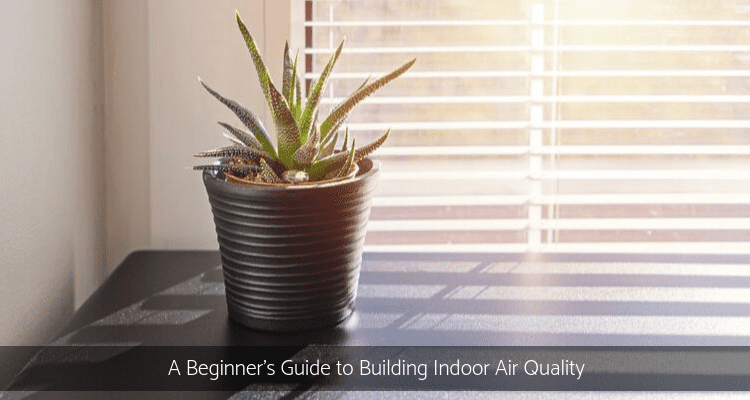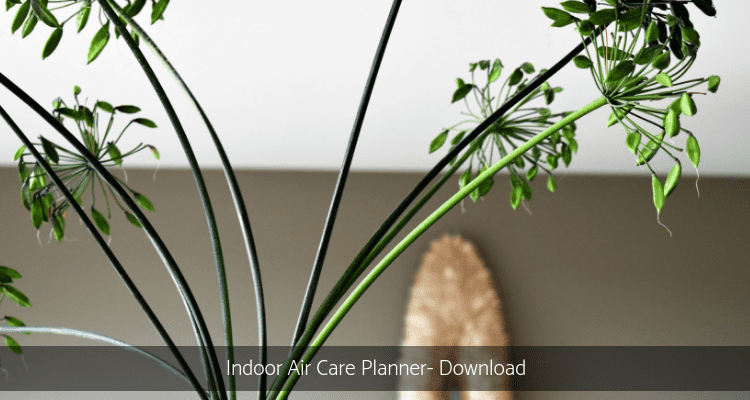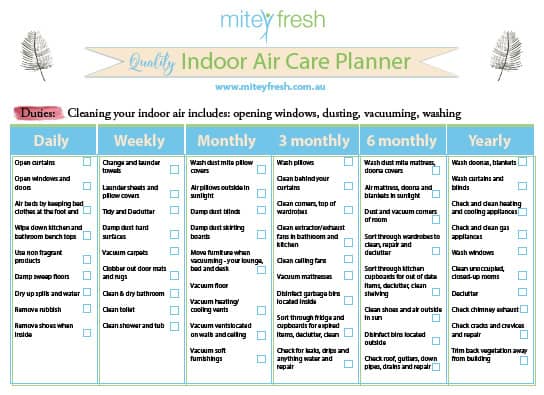You’ve got your family. You’ve got your belongings. And of course, you’ve got the keys to the front door. You’re all set to enjoy living at home for years to come, right? The answer depends on your approach to indoor maintenance. I mean, really LIVE!
Just like your teeth, your mobile device, your car, or maybe you yourself, your home needs regular upkeep to be at its best. That’s why it pays to develop a strong basic understanding of quality indoor maintenance essentials. When you know how your indoors work, the best ways to care for it, and how to plan for it, you’ll be ready to solve just about any potential indoor air problem that wafts your way.
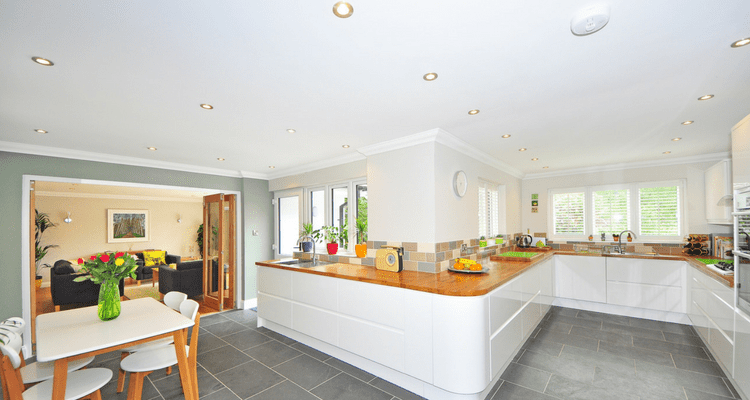
Good Building Maintenance Begins with Knowing Your Indoors
Before you can properly enjoy or care for your building, you might need to brush up on the nature of your indoor air quality. You don’t need to take a diploma course or go for your masters in airspace science from University. But knowing the basic parts of your building, home or room and their functions, helps you keep everything running smoothly – and makes it easier to resolve issues when they occur.
The Basic Parts of a Building
Like most improvements, building or renovations, you can get as fancy as you like with your home. You can add advanced heating and lighting, install high-tech appliances, and even enjoy convenience while you live with things that open and shut at a command. But whether you have a basic apartment in the city or a massive McMansion in the suburbs or a cottage in the country, every home has four key elements that need regular care to keep the occupants happy and healthy.
These include:
- The building’s indoor air
- The building’s interior materials, hard and soft
- The building’s filter system
- The building’s cleaning system
Building’s Air Indoors
Apart from stating the obvious – after all, you can’t enjoy an empty home unless you’re minimalistic – but the air in your home is key to lasting health and happiness. Keeping it clean, fresh, and balanced protects you and your family from contaminants and pollutants. It also helps you avoid costly products, services and repairs due to decomposition or odour build-up, and helps your whole building last longer
HOW TO
Is clutter slowly choking your health and environment
Closed up rooms without good ventilation are breeding grounds for health problems. Yet there is one step worse than that, namely closed up rooms without good ventilation AND heaps of clutter, the opposite of minimalism!

Building’s Interior
The materials of your building interior are in constant contact with indoor air, and everything that enters it. Keeping these surfaces in good repair, dry, clear of dust, mould and gasses, will help keep your interiors clean, safe and healthy.
Building’s Air Filter System
The breathing lungs of your building is also its liver. OK, that sounds a little weird. But walk it through with me: your building openings draws in air, keeps your air circulating, and expelled outside again like your lungs do when you breathe in and out. Your HVAC clears dust and other contaminants from your air just like your liver filters last night’s meal from your blood.
Both protect you and your building from harm. Without a functioning filter system, your space will soon be a contaminated, polluted, unbreathable mess.
Depending on your design and layout, you might have a HVAC system, a pre filter, a dehumidification feature. Or, if you have an air purifier, a HEPA filter, a carbon filter.
PRODUCT:
Air Purifier
E20 PLUS includes an additional final stage 6kg carbon filter for applications requiring heavy duty chemical & odour removal. Excellent for removing pollution from main roads, smoke and mycotoxins produced by mould spores.
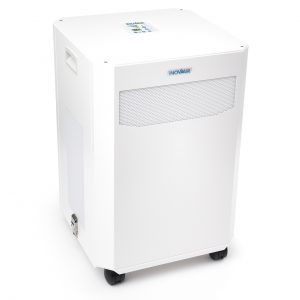
Building’s Cleaning Systems
If your building’s HVAC or air purifier’s filter is its liver, then your cleaning tools – microfibre cloths and vacuums – are its kidneys and intestines. Your microfibre cloths – not to be confused with a duster cloth – gather dust and debris into the cloth during hard surface cleaning, while the vacuum removes dust from these surfaces, soft furnishings and nooks and creates space for clean, fresh air back into your building. And like your kidneys and intestines, they work best when they’re clean and clear of dust and dirt.
No two buildings or spaces are alike, and you’ll no doubt encounter room air maintenance challenges specific to your home as time goes on. But if you’ve got a firm grasp on these four building elements, you’ll be well equipped to face down most upkeep challenges.
HOW TO
Why There’s Dust in Your Home and How to Get It Out
If you notice dust on the floor or on shelving and you vacuum regularly, guess what? That’s where it came from. Your vacuum!
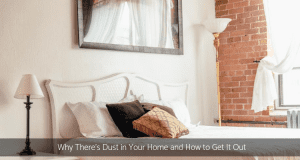
The Three C’s of Proper Building Indoor Air Maintenance
The foundation of effective building indoor air care is built on three simple but important concepts: circulation, cleaning, and comfort.
Circulation
Even if you’ve never experienced your grand parents’ ways of minimal possessions and drafty homes, you probably know that stagnant, still air smells old, musty and gaggingly gross. In your home, as is in the great outdoors, moving air is cleaner, fresher, and safer. Proper air circulation is key to safe and healthy living.
A building with good air circulation rarely has issues like musty smells, contaminated air or surface mould infestation. Keep your windows and doors open and mechanical system running daily to maximize circulation.
PRODUCT:
Air Purifier Hire
Hire an Air Purifier to reduce particulate pollutants, pollens, moulds and environmental chemical overload and enjoy welcome relief from your symptoms.
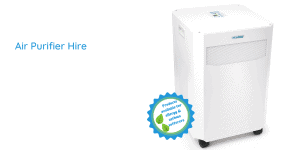
How long should I run my air purifier? Ideally, 24 hours a day, 7 days a week. But since that’s not feasible for everyone’s budget and, we recommend running your purifier at least 10 to 12 hours a day. That’ll turn the air over a few times, 6 air exchanges per hour, and help keep your indoors fresh and healthy.
The other key element to good indoor air circulation is frequently cleaning your pre-filter and monitoring HEPA and charcoal filters. In this case, cleaning refers to removing the filter, dusting off with a brush or washing in water and diverting the dust and built-up contaminants to the outside, removing them out of your building.
How you dust and wash your filter depends on the type of filter you have, but the underlying concepts are largely the same.
Tip: If your space has an HVAC or an air conditioner feature, turn it up to turbo to boost up its filtering power. Dusty and contaminated air will clear more quickly as the HVAC’s filters will capture particles.
Cleaning your HVAC filters
Cleaning
If it has proper circulation, you’ve already made cleaning your building much easier. But you’ll still need to apply some good old-fashioned elbow grease. The basic tools you’ll need are:
- Vacuum barrel
- Hose
- Wand
- Power head
- Floor brush
Both nature, the people and pets entering your building, bring all sorts of particulates and gases into your building, from soil, debris, and the odd cockroach or rodent, bedding and lounges to residues from personal care products shampoos, perfumes, and hair products, cleaning products laundry, bathroom and kitchen, pet dander and care products. Add in the risks of bacteria, drinking water and cooking containers and cleaning your building becomes an absolute essential part of fresh, clean living.
Dust, sweep, and vacuum your building weekly, at a minimum. This will keep dust out of your air, and your floors clean and healthy. Baking soda paste works particularly well as a basic scouring cleaner that won’t damage MDF benchtops or tiles when you clean.
An automatic robotic vacuum cleaner can significantly cut your space cleaning time. It won’t eliminate the need for regular vacuuming and getting into corners, but it’ll make both tasks easier, freeing you up to spend time enjoying your home instead of cleaning it.
You can also make your cleaning life easier with a few unique additions to your indoors. Place a bag of rocks – zeolite – into your room, or even right into the wardrobe, and they’ll absorb moisture and odours left behind by new building materials off-gassing, stagnant corners, damp building cavities and cooking odours. You can also attach fly screens to your windows to create an extra-fine filter that’ll catch more contaminants than a vacuum alone.
They’ll take a while to show wear and tear, Zeolite is another win.
Tip: If you have the good old floor boards, the gaps created between the boards will help pull air into the spaces, inside, sub floor and outside and make it easier to clear contaminants during cleaning. Concrete floors don’t have these gaps, but you can get the same air-clearing boost with an air purifier or manual vacuum.
Simply attach your power head to the wand and hose, back to your vacuum barrel and place it on the side of your floor, making sure the vacuum is closest to one wall. Turn it on, and it’ll act as a suction to help you clear contaminated air more quickly.
Tip: You can also clean contaminated air quite quickly with an air purifier. But remember, that just treats the symptom, not the cause, so it’s only a band aid or temporary fix.
PRODUCT:
Air Purifier
E20 PLUS includes an additional final stage 6kg carbon filter for applications requiring heavy duty chemical & odour removal. Excellent for removing pollution from main roads, smoke and mycotoxins produced by mould spores.

Comfort
Step away from the microscopes and test tubes. Indoor air biology might sound intimidating and complicated, but you don’t have to worry. While it is an essential part of effective indoor maintenance and air care, basic air biology is surprisingly straightforward.
HOW TO
How to HEPA?
If you don’t have a good vacuum cleaner with a HEPA filter, or having air quality issues, you need to learn how to vacuum a room professionally.
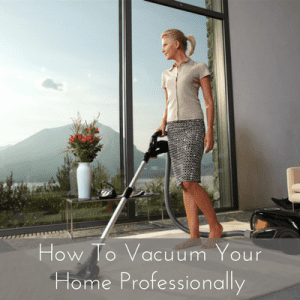
The most important tool in your bag of air care tricks is understanding your indoor air. You wouldn’t add sugar and milk to your tea without tasting it. So before you reach for the chemicals, test your air. Understanding what’s in your air, and what isn’t, is the first step to balancing it.
HOW TO
How to test indoor air accurately
It’s important to learn how to test indoor air quality and do it at least once a week to make sure the air you breathe is pleasant, and to keep your health level in check.
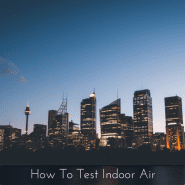
The three most important parts of indoor air care balance are:
- Temperature: The measure of how hot or cold your indoor air is. High levels are hot, while low levels are cold. The ideal range for your indoor air is 22 to 24 degrees Celcius.
- Air Flow: Works as a temperature buffer and helps avoid huge spikes in heat or cold. The ideal range is 0.1 metres per second.
- Ventilation: The amount of fresh air introduced and exchanged with your indoor air and exhausting stale air. Proper exchange levels vary depending on wind speed and direction, and the size of building openings.
Once you know your temperature, air flow, and ventilation levels, you can start to open windows to tweak your air balance. Take your time, open doors, adjust your HVAC system and be sure you know what each action does and how it’ll affect the air, and the occupants who live in it, before you add to it.
Don’t Forget the Air Purifier Shock!
Every once in a while, your opening of windows and doors will need a little help, especially after high humidity or rainstorm, or if a lot of stuff have entered the place or people have been living inside the home. To make sure your indoors stay fresh and clean even when the building openings are maxed out, add an air purifier turbo burst on a regular basis.
Tip: Always shock your air before you go to bed, or at night. If you shock during the day, you wont be able to enjoy the benefits, so best crank up the air purifier an hour or so before bed time to give it a chance to do its job. Then run the purifier for at least one or two hours to make sure it’s fully circulated.
Create a Maintenance Schedule
As you learn more about your indoor air and how to care for it, your to-do list might start to seem a little intimidating. Creating an indoor air care maintenance schedule makes it easy to stay organized and make sure important tasks don’t slip through the cracks.
Not only will you be able to stay on top of basic upkeep, but you’ll be able to plan ahead for more advanced indoor air maintenance tasks like cleaning your heating, ventilation and air conditioning units, caring for indoors during the winter when everything is closed up generally, or getting your indoors ready to roll when spring season returns.
PRODUCT:
Indoor Air Care Planner
Print this handy indoor air care planner and put on your fridge so the whole family can help take care of the indoors this year.
Come on in, the freshness is fine—Thanks to You
 Owning your indoor air is one of the most rewarding ways to enjoy breathing easier and living easier in at home. Yes, it needs regular care, but that doesn’t mean you’ll spend your life shackled to a vacuum or fiddling with your chemistry knowledge.
Owning your indoor air is one of the most rewarding ways to enjoy breathing easier and living easier in at home. Yes, it needs regular care, but that doesn’t mean you’ll spend your life shackled to a vacuum or fiddling with your chemistry knowledge.
In fact, when you know how your indoor air works, understand the care it needs, and plan ahead, you might find yourself taking pride in your indoor air care prowess. You’ll enjoy not just your breathing, but the peace of mind that comes with regular and thorough indoor living maintenance.
For quick reference, check out our Quality Air Cheat Sheet.
I work with women who are feeling sick and tired in their home. I help them to sift through the environmental hazards and triggers to get clarity about what’s toxic and what’s not so they can create a healthy home for their family they love.
I do this through conducting in home assessments of you, your building, testing, finding the source and document recommendations to helping you breathe easier, live easier.
Author
-
We’re glad you’re here. We’re Carol and Tony, founders of one of the longest running Healthy Home Blogs in the world, Mitey Fresh Australia. We’ve been on this journey for the last 25 years and are passionate about helping families sift through health hazards and triggers like allergens, mould, water damage, chemicals and EMFs, to get clarity about what’s toxic and what’s not so they can create a healthy and happy home for their family they love. Each month, people visit this blog seeking focus on the health and wellbeing of their loved ones, sustainable and effective practice tips and guides, to help create and manage healthier indoor spaces, improve the built environment that is pleasing to the senses and support healthy living and nature, every day. Starting this blog was to help change people’s lives, one family at a time, and we can’t wait to share how its allowed us to stand next to you and show you how interpreting these synergies between buildings and the environment they are built in will impact upon the health and well-being of those who occupy them. Find out more about Healthy Homes and what this blog can do for you!
View all posts

